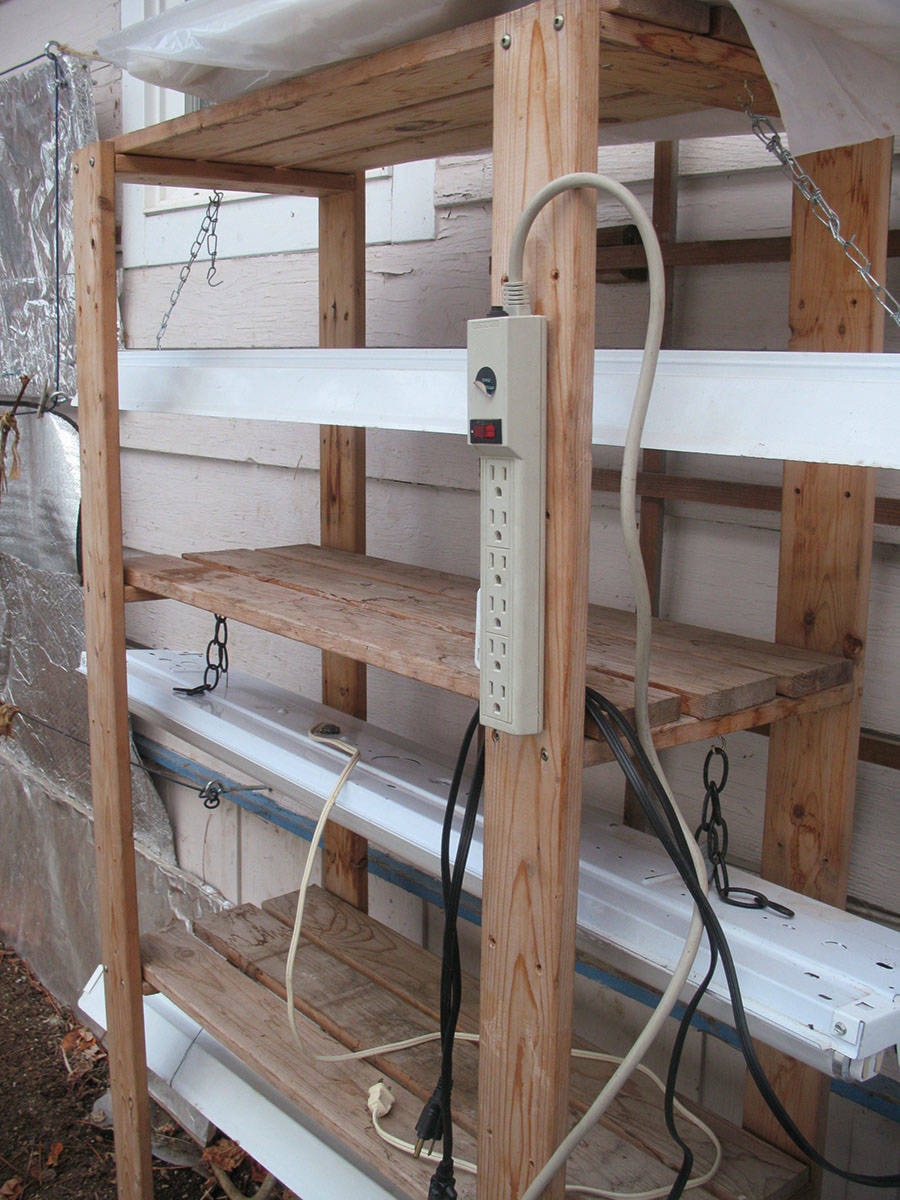By Mary Lowther
The rain, I mean snow, hasn’t let up yet so I’m starting parsley and spinach in flats in the greenhouse.
If I didn’t have a greenhouse, I’d put them on a set of shelves in the window or under lights and leave the lights on for 16 hours a day. I use an affordable timer I bought at Home Hardware. My flats sit on shelves under fluorescents and I cover the whole shelf unit with plastic to keep the heat in. I never use heating mats because the heat from the lights sprouts seeds quickly enough. Maybe the folks back east need the mats.
Even though I’m itching to sow peas, I won’t bother starting them inside like I used to because for the last two years the direct-seeded peas outgrew and out produced the ones I started inside. When we moved here 10 years ago I couldn’t do that because the direct-sown peas got eaten up by slugs. Why doesn’t this happen now? I think it’s because the soil is so much richer with the amendments I’ve been adding each year, including the extra minerals and alfalfa meal, that the peas grow so fast that the slugs can’t keep up. Either that or the gardening goddess has been hearing my prayers.
Certainly winter rains wash out most of the nutrients and clay in my garden, but the cover crops and weeds I allow to grow over winter have retained some too, so when I dig them under, they rot and these nutrients become available to the peas et al.
I don’t always use inoculant when sowing peas, but when I do, I don’t wet the seeds with water or syrup anymore to make the powder stick to the seeds, as some authors have suggested. Surely they were joking about the syrup because when I tried it, all peas stuck to each other and my fingers like burrs on a dog and when I finally scraped them off they fell in a lump in the trough and that was that.
What I do now is sprinkle a light dusting of the powder along the bottom of a one-inch deep trough (called a drill), toss the seeds in about two inches apart, push the soil back in and gently tamp it down. I sow three rows two inches apart on each side of the mesh I install down the middle of the bed and leave the seeds to germinate and grow without any watering from me. There’s enough in the ground already to see them through to harvest.
I haven’t noted if the peas grew better when using inoculant so this year I’ll use inoculant on one section and see how it fares compared to a control area sown without it. I’m glad I paid attention in science class when we learned about the scientific method!
I trellis the peas with six-foot-high rayon-type mesh because I read that wire mesh burns pea tendrils. I string this mesh along a line between eight foot high rebar poles that don’t rot and are not too difficult to hammer into the ground. It’s a bit tricky balancing on a ladder in the soft soil to reach that high but I haven’t got a better method yet. These poles are really useful later for holding down the edges of Remay and mesh that go over hoops on the garden beds to keep out critters and bugs and other vermin like our cute little pussycat Mrs. Premise.
Please contact mary_lowther@yahoo.ca with questions and suggestions since I need all the help I can get.
